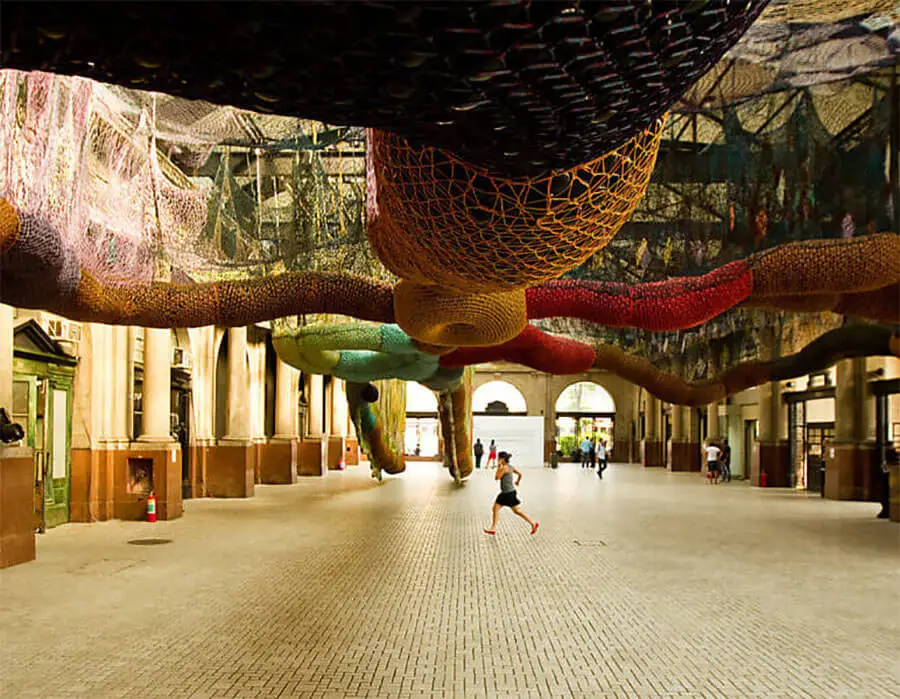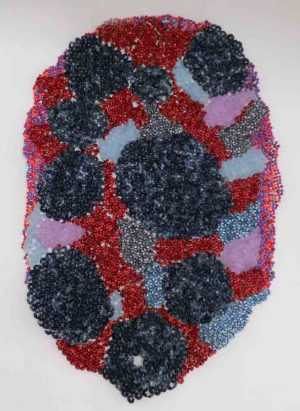12 Contemporary Brazilian artists you need to know
There is a dominant trend in the expanding contemporary art scene in Brazil.

The cultural effervescence of the 1950s began to question post-war society, rebelling against the pervasive lifestyle in cinema, fashion, television and literature. Contemporary Brazilian artists followed this ideal that questioned values and standards.
There is a dominant trend in the expanding contemporary art scene in Brazil. In fact, it is a very particular, mature place, with material and inspiration for artistic experimentation. Therefore, we have separated a list of 12 of the main Brazilian artists in this segment of art.
Carlito Carvalhosa

A celebrated Brazilian conceptual artist, Carvalhosa uses a variety of found media and objects to transform architectural space.
His best-known work is Sum of Days (2011), a monumental installation of translucent white material and recording of ambient noise, which he installed in the atrium of MoMA.
Saint Clair Cemin

Ranging from figurative to abstract, from steel to robust marble, Cemin’s sculptures reference a wide range of artists and cultures.
Obras em Destaque
Although he was born in Brazil, the sculptor now lives and works in Brooklyn and Beijing.
Sandra Cinto

In his detailed drawings, paintings and installations, Cinto’s works are mesmerizing, involving images of the sea, sky and natural elements as visual metaphors for life’s Odyssey. (Take a look at his Seattle Museum of Art transformation here)
Cildo Meireles

Meireles creates immersive installations that encourage interaction and reflect political concerns.
His extensive works incorporate found objects such as bones, coins and cookies, or the bottles from his Coca-Cola Project in the Tate collection.
Beatriz Milhazes

Beatriz Milhazes reveals her willingness to approach painting as a decorative fact, such as Henri Matisse.
She is interested in the profusion of Baroque ornamentation, especially the rhythm of the arabesques and the ornamental patterns present in Guignard’s work.
Iran do Espírito Santo

Santo is known for sculptures in which everyday objects – such as dice, light bulbs, cans and mirrors – are abstracted into simplified, minimalist geometric shapes.
Many of his works are included in the permanent collection of MoMA.
Cao Guimarães

Guimarães captures everyday events and silent actions in urban and rural settings across Brazil.
He is well known for his “gambiarras” – subtle interventions that he display with found objects and then documents in poetic and disturbing photographs.
Lucia Koch

Adding light filters and translucent materials, altering skylights and facades and pasting images of three-dimensional spaces onto walls, Koch focuses her practice on transforming architectural spaces.
Her works are created to cause tension between interior and exterior, challenging the limits of particular spaces.
Ernesto Neto

Neto, one of Brazil’s most influential installation artists, creates large-scale sensuous environments that evoke bodily experiences, often working with an elastic fabric in vibrant colors, which he fills with aromatic, organic or tactile materials.
“Sex is like a snake. It glides through everything,” he says about his work.
Tunga

José de Barros Carvalho e Mello, also known as Tunga, manufactures specific installations that transform galleries into dreamlike environments using a variety of materials, including plastic, yarn and reused objects.
Its extensive influence can be seen reverberating throughout Brazilian contemporary art.
Adriana Varejão

At the end of the 1980s, Adriana Varejão used Brazilian Baroque churches and their tile work as a parameter.
Afterwards, she starts to appropriate images from the history of Brazil, retaking ethnographic representations of indigenous and black people, to comment on the process of miscegenation in the country and the violence of the colonization.
Vik Muniz

Born into São Paulo’s poverty and rising as one of the most famous brazilian artists, Muniz reuses everyday materials for intricate, layered appropriations of canonical artworks.
Among his many works, Muniz has recreated Warhol in diamonds, da Vinci in peanut butter and jelly and neoclassical masterpieces from garbage in Brazil’s largest landfill.






